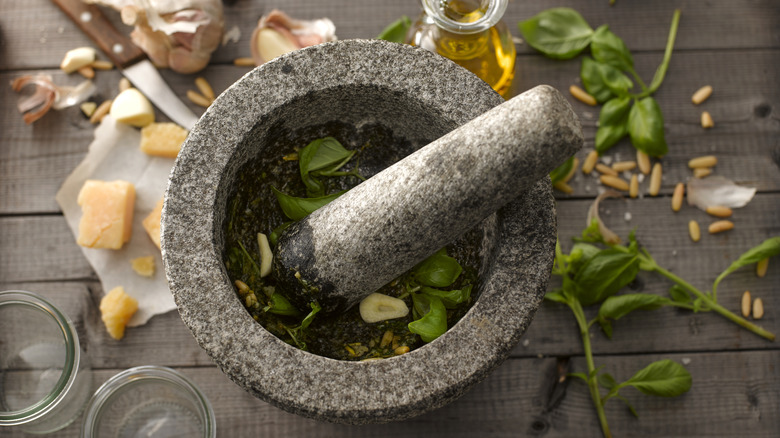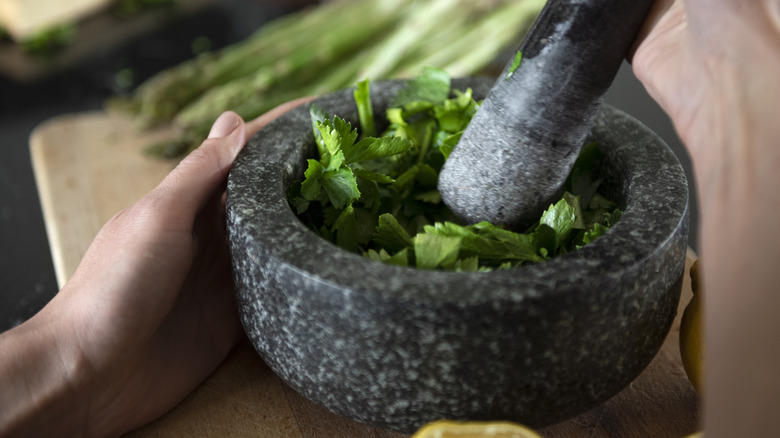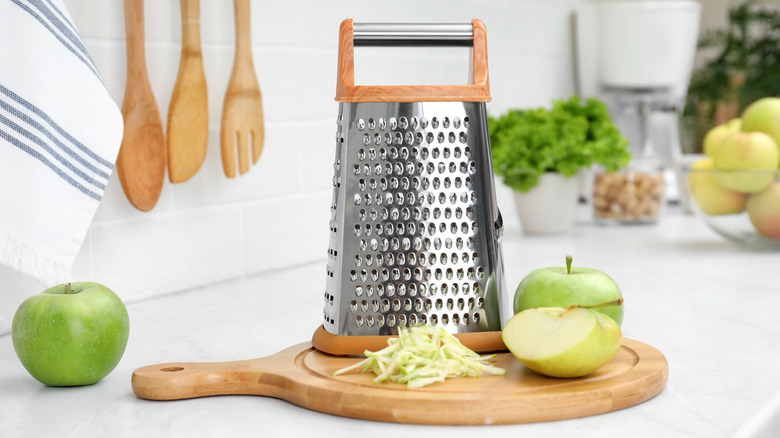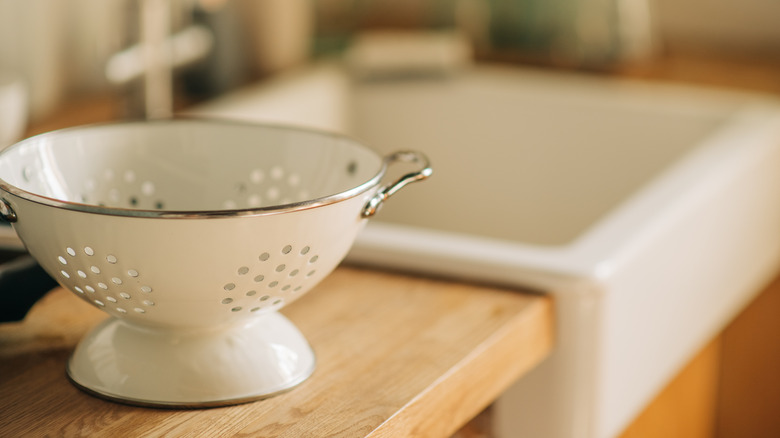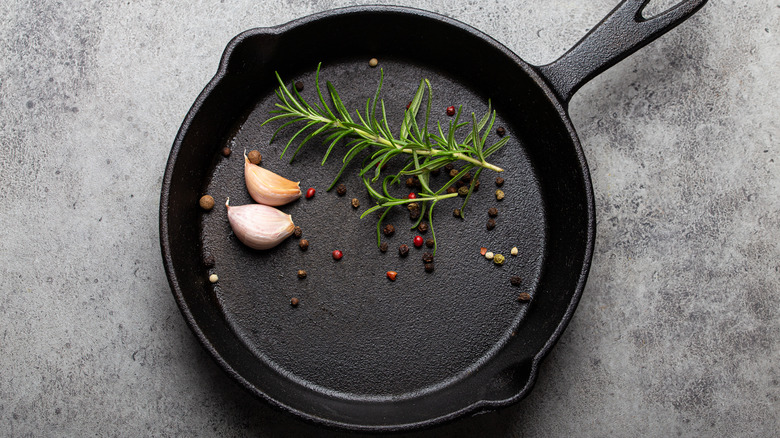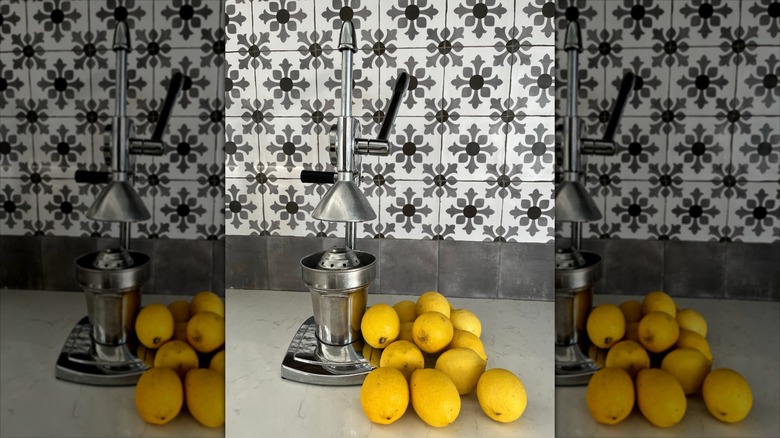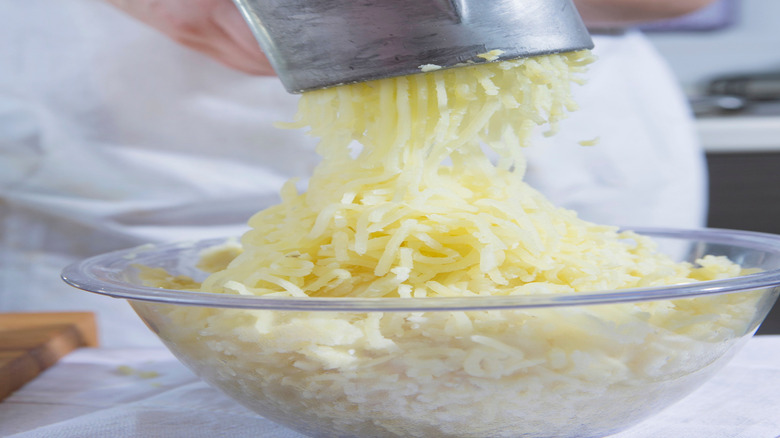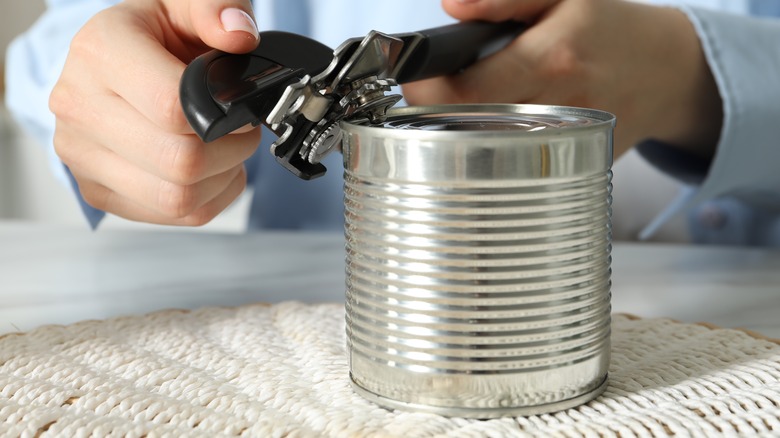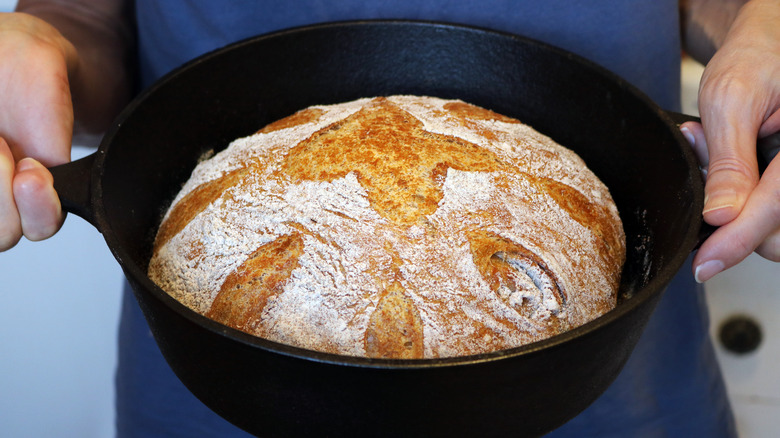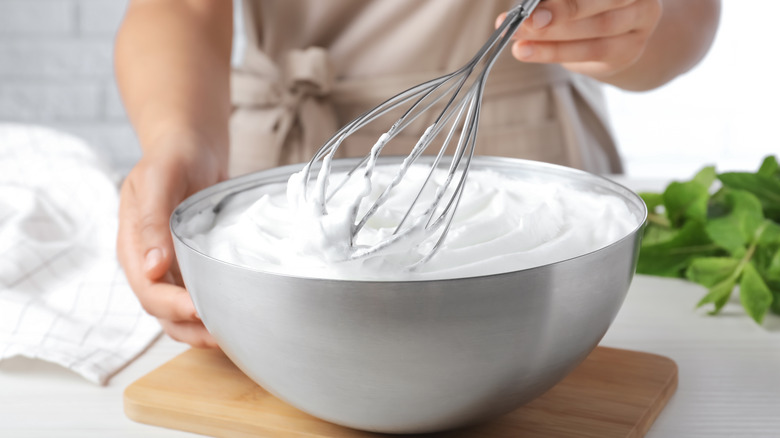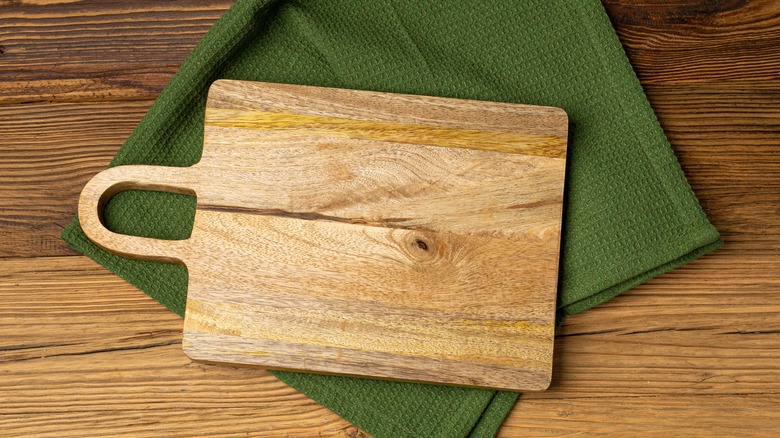11 Old-School Kitchen Tools That Still Outshine Modern Gadgets
So many people go gaga for kitchen gadgets. After all, good ones can speed up prep time and generally make your life easier. But every so often, you reach for a simple tool and wonder why it ever fell out of favor. Old-school kitchen tools like a mortar and pestle or a box grater aren't novelties. They do certain jobs better, or at least differently, in ways that a modern gadget can't quite replicate. There's a reason they've been around for so long.
This piece isn't about shaming processors, blenders, or single-purpose gadgets. Those have their place. But there's something special about tools that require a little elbow grease and reward you with precise control, better flavor in the finished product, or just fewer dishes to do. They also tend to last longer — and won't need firmware updates.
We'll run through some of the kitchen classics that deserve space in your drawers or on your counter, analyzing what they do best and why they beat modern alternatives at certain tasks, as well as a few practical tips for getting the most from them. If you're trying to cut down on clutter or dizzying appliance purchases, these are the tools to keep. They're reliable, tactile, and often cheaper than the latest gadget. Here's to centering those timeless kitchen tools that are still popular today over the latest trend.
Mortar and pestle
Humans have been using grinding tools that are precursors to modern mortar and pestles for literally tens of thousands of years. This tool has stood the test of time because it's one of the most versatile in the kitchen. You can use it for grinding whole spices into powder, crushing garlic and herbs, and blending ingredients into emulsions and pastes. Yes, a food processor or blender can do many of the same jobs faster, but speed isn't the whole story. The mortar and pestle grinds rather than slices, and that difference changes the texture and releases oils in ways that a blade doesn't.
When you pound spices in a mortar, you crush cell walls, releasing essential oils and aromatics. That yields a fresher, deeper flavor than quickly chopped or pulsed spices. For wet uses — like making pesto, chimichurri, or curry pastes — hand-grinding creates a creamier mouthfeel and a more integrated texture. A blender tends to emulsify aggressively and can heat delicate ingredients from friction, while the mortar's gentler grinding keeps temperatures down and textures more nuanced.
Of course, materials matter. Granite and basalt mortar-and-pestle sets are heavy and ideal for hard spices and seeds. Marble is smoother and better for softer pastes or acidic ingredients that could stain porous stone. Ceramic works for light tasks but risks chipping under heavy use. You also need to choose a size that works for your needs. But, whatever you go for, it's a tool that sometimes surpasses blenders and food processors in taste and texture, if not speed.
Box grater
The box grater is compact, super simple, and somehow indispensable for tasks where a food processor's convenience doesn't compensate for the hassle. Yes, a processor will shred a whole block of cheese in seconds. But the box grater wins in several practical, everyday ways: It's smaller to store, easier to clean, cheaper to replace, and gives you tactile control you can't get from a food processor.
Look at what a single box grater can do. Coarse shredding for potatoes, cabbage, or robust cheeses; fine grating for parmesan or garlic; a zester side for citrus; and often a slicing side for quick vegetable ribbons. You can grate chocolate directly over a dessert, create a superfine nutmeg garnish, or toss a pile of carrot shreds into a salad without dragging out the processor. Because you're grating by hand, you can vary pressure and angle for different textures — so a carrot grated by hand has a different mouthfeel than one shredded in a machine.
Ease of cleaning is another underrated benefit. You can quickly and easily rinse a box grater or run it through the dishwasher. A food processor, however, involves a bowl, lid, pusher, and blade, all of which are usually best washed by hand to increase their lifespan. The grater's low-maintenance nature makes it more likely to be used more often, which, in practice, means better cooking outcomes. There are some mistakes everyone makes with box graters — like only using one side or not realizing how versatile they are — but these are easy enough to avoid.
Colander
The colander is one of those old-school kitchen tools that has been around forever, which serves as a testament to their usefulness. Sure, you can buy every newfangled strainer and clip-on gizmo that promises to drain a pot without extra dishes, but a solid colander remains the most reliable and versatile option in the sink. It's sturdy enough to hold a heavy load of pasta, big enough to rinse a crate of berries, and roomy enough to act as a steam basket or a temporary bowl when you're juggling tasks. There are ways to use a colander you might not even have realized.
Clip-on pot strainers are useful in very specific scenarios. They're convenient for dribbling hot water off a pot without transferring food to another vessel, but they also come with caveats. Many of them depend on pot diameter and lip shape, so they won't fit every saucepan. The clips or rubber grips that hold them in place can break or slip, and their small surface area makes them insufficient for handling larger volumes. A flimsy clip strainer can tip when you least want it to, scattering noodles and hot water down the drain — effectively ruining dinner.
A good colander does what you need it to do brilliantly, with nothing much that can go wrong other than a slip of a hand. Choose a stainless steel or enameled model and it will basically last forever. You might have one extra item to wash and store, but it's so worth it for its ease of use and versatility.
Cast iron skillet
Cast iron is the kitchen classic that still outperforms many modern pans. Nonstick pans are convenient, but when it comes to heat performance, durability, and flavor development, nothing quite matches a seasoned cast iron skillet. It holds heat well, so when you sear a steak or brown a pork chop, you get a deeper, more even crust and a flavorful fond that lifts pan sauces. That's a texture and taste a nonstick surface can't produce.
Cast iron is also incredibly versatile. It's oven-safe, so you can start on the stove and finish under high heat in the oven without worrying about warped bases or damaged coatings. It tolerates metal utensils, abrasive cleaning when needed, and decades of use. Well-cared-for cast iron develops a natural nonstick patina that improves with time and use, no synthetic coating required.
There are some myths about cast iron pans you need to stop believing (you can wash them with soap, actually) but they do have some quirks. Cast iron is heavier than other metals used to make cookware, and it needs to be dried promptly and lightly oiled to prevent rust. But the care routine is way less drama than some people would have you think. Nonstick pans still have a role for some cooks, but they have a limited lifespan and can't take the same heavy use. If you want one pan to do a huge range of jobs well and that could last you a lifetime, cast iron is the way to go.
Manual citrus juicer
For squeezing lemons, limes, or oranges, a manual citrus juicer — whether a simple handheld reamer or a larger press — is often the best tool in the kitchen. Electric juicers promise speed and convenience, but they're more complex. There are extra parts to clean, motors to fail, and a tendency to over-extract bitter oils from the pith if you aren't careful. Manual juicers give you direct control over pressure and extraction, which usually translates into brighter, fresher juice with less bitterness.
There's also a texture and flavor argument. An electric juicer's aggressive spinning and centrifugal force can heat the juice microscopically and introduce more oxygen, which slightly alters freshness and may make the juice oxidize faster. Manual extraction keeps temperatures low and lets you stop the second you have just the juice you want. That's particularly useful when you're working with small amounts where it's overkill to drag out an electric machine.
Practical benefits are big, too. Manual juicers are generally inexpensive, compact, and easy to clean. A quick rinse with a sponge or dishwasher cycle are usually enough, and they have no motor housing or pulp baskets to disassemble. They're also more durable, as they have fewer parts to break. For larger volumes, a heavy-duty, hinged manual press is quick and simple to use without needing power. It's a good compromise if you squeeze often but don't want an electric unit.
French press
French presses are old-school but still make sense even in an age of single-serve pods, high-tech drip machines, and other coffee-making alternatives like the Aeropress. Its simplicity is one of its major draws. It just takes coarse-ground coffee, hot water, a few minutes of steeping, and a metal mesh plunger that separates grounds from liquid. Where a drip machine filters coffee through paper and yields a cleaner, lighter cup, the press leaves behind more of the coffee's natural oils, producing a fuller-bodied brew.
That fuller taste and texture matters. For many coffees, especially single-origin beans with complex flavor notes, a French press emphasizes body and richness. You can control extraction with water temperature, brew time, and grind size, and because there's no paper filter, nothing absorbs the nuanced oils that carry much of coffee's character. Compared to bright pour-over and intense espresso, French press coffee is somewhere in the middle. It's robust but nicely balanced.
Practical advantages are solid too. It's low-tech and durable, the mechanism is straightforward and easy to clean, and there are no sensors or parts that will need replacing in a few years. It also gives you multiple cups in one go without fussing with programming. There are trade-offs (like sediment in the bottom cup and the need to be exact about grind size), but many coffee lovers prefer the slightly rustic, hands-on ritual.
Potato ricer
A potato ricer might seem like the kind of vintage tool that your grandma had in her kitchen, but it's a must if you want perfect mashed potatoes. It outshines blenders and even some electric mashers — plus it's cheaper than buying a dedicated electric gadget. Ricers force cooked potatoes through small holes, creating uniform, light strands that fold together into a pillowy, lump-free mash. Unlike a food processor or blender, which can overwork potato starch and turn your mash gluey, a ricer preserves texture while incorporating butter and cream smoothly. The result is silky, delicate, and consistently reliable, so there's no need for anything new and fancy.
With a ricer you can also control the pace and the pressure, so it's hard to overdo it. Electric mashers can be tempting for speed, but they often sacrifice texture for convenience. A ricer also makes quick work of other tasks. You can push cooked root vegetables through it for velvety purées, use it for extruding soft cheeses or making spaetzle and gnocchi dough, or turn apples into a uniform sauce. The device is compact, easy to clean, and almost impossible to break, whereas electric mashers can malfunction or wear out. Using a potato ricer is the best way to avoid gluey mashed potatoes, hands down.
Manual can opener
There's a good reason manual can openers haven't vanished from kitchens: They work, they're compact, and they don't hog counter space. Electric can openers were once a popular trend, but they come with drawbacks. They require an outlet, they take up space, they can be noisy, and their blades and gears wear out. A decent handheld can opener is simple to use and nearly indestructible. What more could you want?
There may or may not be a correct way to use a can opener, but whether you go in horizontally or vertically, it will get the job done. From a maintenance perspective, manual openers are forgiving. Just wash, dry, and oil the gear occasionally and they'll last for years. They're also small and portable — a boon for camping or small kitchens where counter real estate is precious. For everyday can-opening needs, the manual tool is quicker to grab and far less hassle than unwrapping and plugging in a bulky electric unit.
Dutch oven
Sure, the Dutch oven might have been around for a while, but there's a reason it has as much of a place in your own kitchen as it did in your great grandparents'. Heavy, usually cast iron, and often enameled, a Dutch oven does everything from searing and braising to baking bread and simmering soups — and it does it in a way that many modern gadgets simply can't match.
The thick-walled pot holds and distributes heat evenly, tolerates high temperatures, and maintains steady heat for long periods. That makes it perfect for techniques that need both an aggressive initial sear and slow, even finishing. Compare that to a slow cooker or multicooker. Those appliances excel at convenience. You can set the time and temperature and walk away. But they don't give you a great sear, and they can struggle to reduce liquids or build a deep fond for pan sauces.
A Dutch oven lets you do those things all in one pot: You can brown your proteins, deglaze the pan to capture browned flavor, add aromatics and liquid, and then move the whole pot into the oven to braise. It's also brilliant for bread baking because the heavy lid traps steam, creating the sort of oven-spring and crackly crust that gadgets like bread machines. Beyond stews and roasts, Dutch ovens are surprisingly flexible. Use them for jam-making, deep-frying in a controlled volume of oil, one-pot pastas, casseroles, and desserts, to name just a few options. They're attractive enough to go from stove to table and durable enough to pass down the generations.
Balloon whisk
You could buy a hand mixer or a stand mixer and never touch a whisk again. For some tasks, that makes total sense. But the classic balloon whisk still deserves a permanent place in any kitchen. Its shape is designed to incorporate air into mixtures quickly and evenly. That makes it ideal for whipping cream, beating egg whites, emulsifying vinaigrettes, and smoothing batters or sauces where you want a light texture without overworking.
Manual control is the balloon whisk's greatest advantage. With a whisk in hand you can feel the resistance of the mixture, stop the second the peaks look right, and adjust speed and angle on the fly. Electric mixers are fast, but they can easily overbeat or overmix if you're not right there watching. They also introduce more splatter and are overkill for a simple vinaigrette or a single egg white. Whisks are quiet, require no electricity, and clean in a flash. They also take up almost no storage space compared with a standing appliance.
If you're making meringue or angel food cake, your life will be way easier with a stand mixer or electric beater. But for basic tasks, a whisk is cheaper, doesn't have a bunch of parts to clean, and you don't have to haul it out the way you would with a stand mixer. It's something that can't fully be replaced with a modern gadget.
Wooden cutting board
Wooden cutting boards are classic for a reason: They're forgiving on knives, durable, and often more pleasant to work on than plastic or glass. The primary advantage is how the material interacts with your blade. Wood gives under the knife so the edge slides between fibers rather than bouncing off a hard surface. That reduces dulling and helps maintain a sharper blade for longer. Glass boards look slick and are easy to sanitize, but they're brutal on edges. Plastic is convenient and dishwasher-safe but can score deeply and hide bacteria in those grooves if neglected.
Properly cared for (ideally washed by hand instead of in the dishwasher), wooden cutting boards can last for decades. Many woods also have natural antimicrobial benefits. Bacteria don't survive as well on them compared with plastic, though that doesn't replace cleaning. Periodic conditioning with food-safe mineral oil or a wax-oil blend keeps the wood from drying out and cracking, but aside from that and hand-washing, there's no special attention these need. They look nicer than plastic boards, are easier on your knives than glass ones, and that's the reason they're still the best choice.
